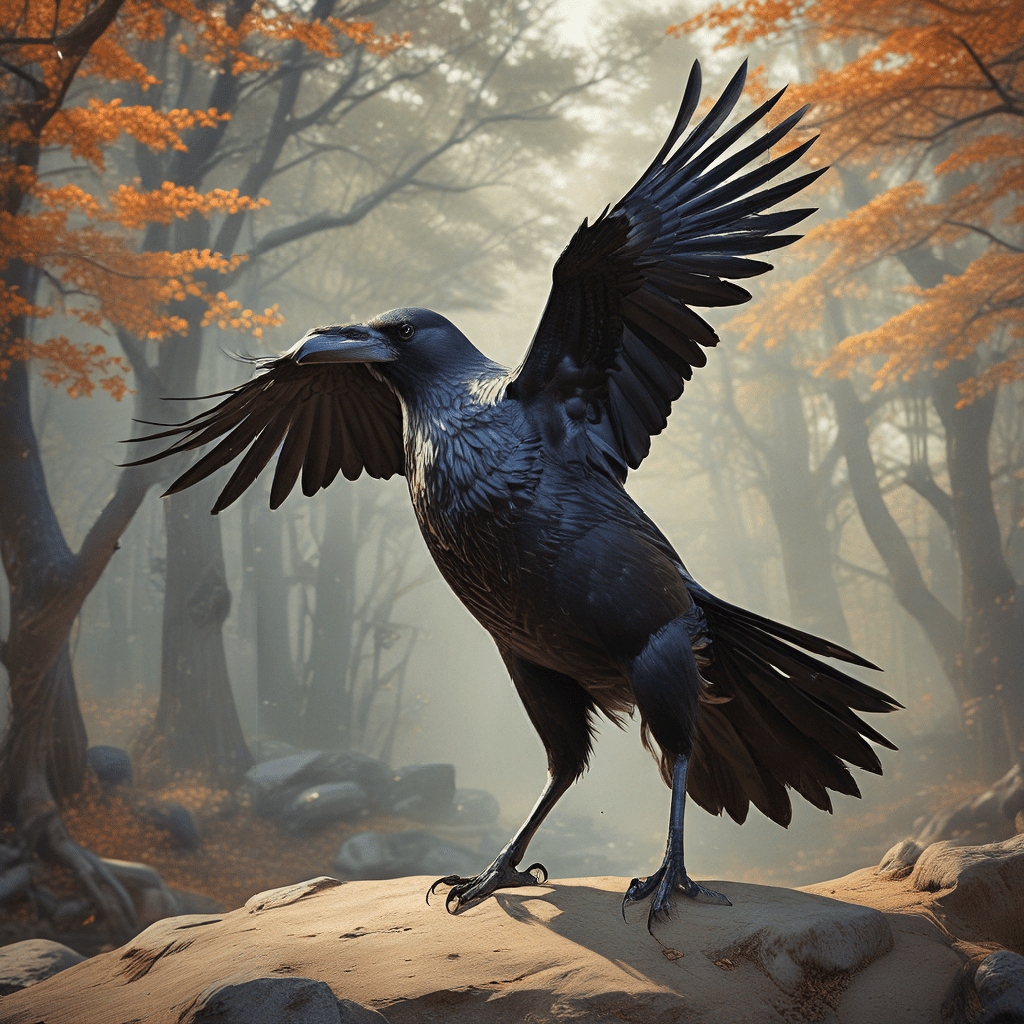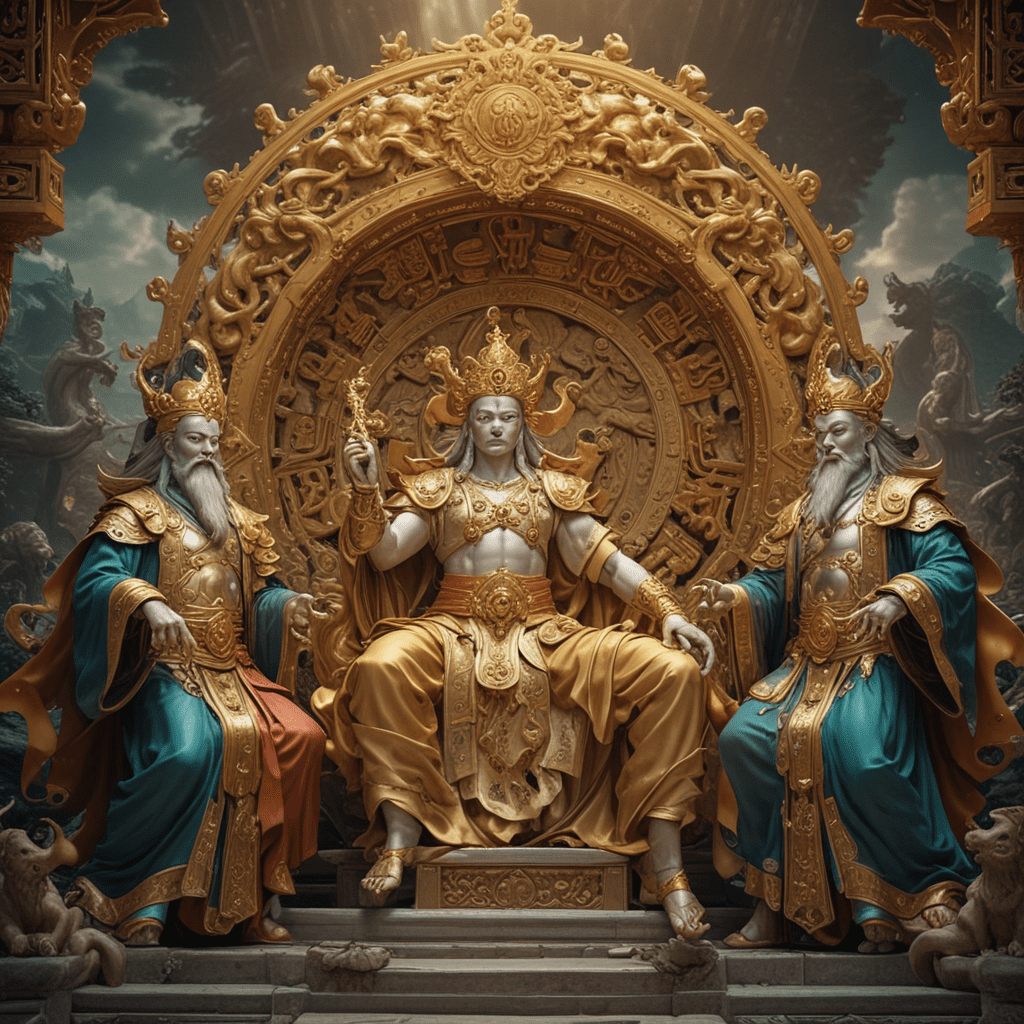The Myth of the Three-Legged Crow: A Symbol of Korean Identity
The myth of the three-legged crow is one of the most enduring and significant legends in Korean culture. It weaves together the history, origins, and even the very identity of the Korean people. This captivating tale is a fascinating glimpse into the rich tapestry of Korean mythology and its powerful influence on national pride.
Origin and Significance: A Powerful Symbol for the Korean People
The three-legged crow, known as "Samjok-o" in Korean, first emerged in ancient Korean mythology. For centuries, it has held a special place in the hearts of the Korean people, representing a powerful symbol of their national identity. It is often depicted in art, literature, and even on contemporary artifacts, a testament to its enduring legacy in Korean culture.
The Three-Legged Crow: A Divine Messenger from Heaven
The three-legged crow is often depicted as a celestial being, a messenger from the heavens. It is said to possess magical powers and a deep spiritual connection to the gods. Its three legs symbolize strength, stability, and the ability to navigate the physical and spiritual realms. The crow is often seen as a symbol of wisdom, guidance, and divine intervention.
Descending from the Sky: The Crow’s Arrival and the Foundation of Korea
According to the myth, the three-legged crow arrived from the heavens to guide the first Korean king, Dangun, in establishing the nation of Korea. The crow's arrival is seen as a significant event in Korean history, marking the beginning of a new era and the foundation of the Korean civilization. The legendary crow is often credited with bringing prosperity, peace, and a sense of unity to the newly formed nation.
The Three-Legged Crow: A Guiding Light for the First Kings of Korea
The three-legged crow played a crucial role in the early stages of Korean history. It is said to have guided the first kings of Korea, providing them with guidance, wisdom, and protection. The crow's presence in the myth symbolizes the divine mandate and the heavenly blessing bestowed upon the Korean people. It serves as a reminder of the nation's origin and the divine forces that shaped its destiny.
The Crow’s Prophecy: Foretelling Destiny and the Rise of the Dangun Dynasty
The three-legged crow is not just a guide; it is also a powerful prophet. In the myth, the crow is credited with foretelling the rise of the Dangun dynasty, the first dynasty in Korean history. Its prophecy is seen as a sign of divine favor and a guarantee of the dynasty's success. This prophecy is a crucial part of the myth, as it connects the crow's arrival to the establishment of the Korean nation. The crow's prophetic ability highlights its divine nature and its close connection to the destiny of the Korean people.
The Three-Legged Crow: An Emblem of Protection and Luck
The three-legged crow is not only a symbol of guidance and prosperity; it is also seen as an emblem of protection and luck. In Korean folklore, the crow is believed to ward off evil spirits and bring good fortune. It is often depicted as a guardian of the nation, protecting it from harm and ensuring its safety. The crow's protective nature is reflected in the use of its image as a talisman or amulet. It is believed that carrying a depiction of the crow will bring good luck and protect the wearer from misfortune. This belief reinforces the crow's significance as a powerful symbol in Korean culture.
Interpretations and Theories: Exploring the Meanings of the Myth
The myth of the three-legged crow has sparked endless interpretations and theories among scholars and historians. Some scholars believe that the crow represents the sun, as it is often associated with the heavens and light. Others see the crow as a symbol of the Korean people's ancestors, who arrived in Korea from the north. The three legs may symbolize the three kingdoms of Goguryeo, Baekje, and Silla, which united to form Korea. Regardless of the interpretation, the myth of the three-legged crow is a powerful testament to the Korean people's rich cultural heritage and their enduring connection to ancient traditions.
The Three-Legged Crow: An Ancient Totem or a Celestial Symbol?
The three-legged crow's origins and nature remain a source of debate. Some scholars believe that the crow is an ancient totem, a symbol of a specific tribe or clan. Others see it as a celestial symbol, a representation of the divine power that shaped the Korean nation. The crow's ambiguous nature contributes to its mystique and its enduring relevance in Korean culture. It allows for diverse interpretations and reinforces its multifaceted significance as a cultural symbol.
The Myth of the Three-Legged Crow: A Legacy of Korean Identity and Culture
The myth of the three-legged crow continues to resonate with the Korean people today. It serves as a reminder of their nation's origins, their cultural heritage, and their enduring connection to the divine. The crow's image is found in various forms of contemporary Korean art, from paintings and sculptures to clothing and jewelry. It is a symbol of national pride and a reminder of the Korean people's rich and diverse cultural legacy.
Frequently Asked Questions
* **What makes the three-legged crow unique?** The three-legged crow is a unique being in Korean mythology. Its three legs represent strength, power, and the ability to navigate different realms.
* **How is the three-legged crow depicted?** The crow is often depicted as a black bird with three long, sturdy legs and a sharp beak. It is sometimes shown as carrying a pearl or a sun in its beak, symbolizing divine power and wisdom.
* **What is the crow’s significance in Korean culture?** The three-legged crow is a significant symbol in Korean culture. It represents guidance, protection, prosperity, and the divine mandate that shaped the nation’s destiny.
* **Is the three-legged crow a real bird?** The three-legged crow is a mythical creature, not a real bird. It is a product of Korean folklore and has no basis in real-world ornithology.
* **What is the myth’s importance in understanding Korean identity?** The myth is essential in understanding Korean identity as it connects the Korean people to their origins, their ancestors, and the divine forces that shaped their nation.



